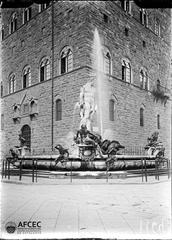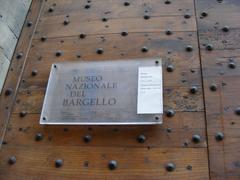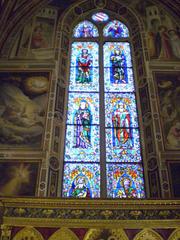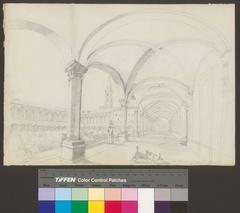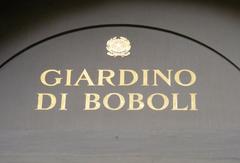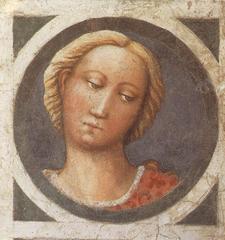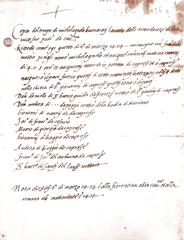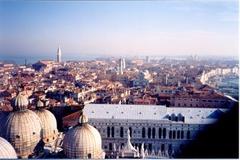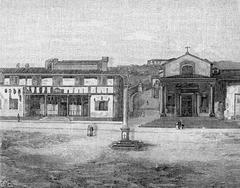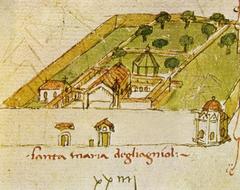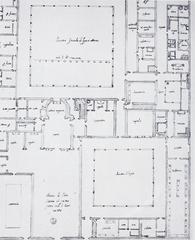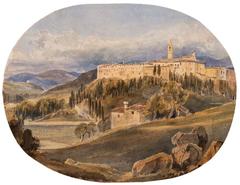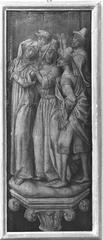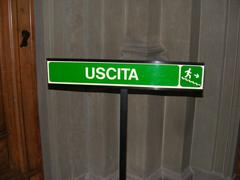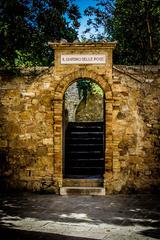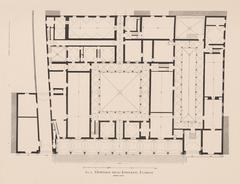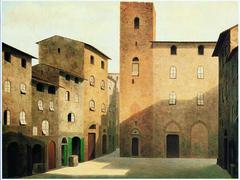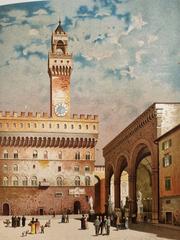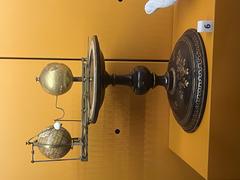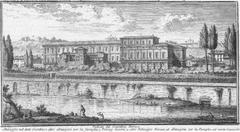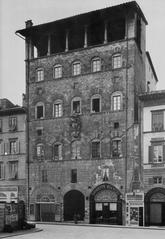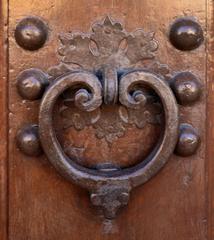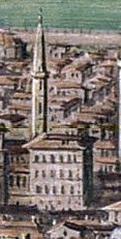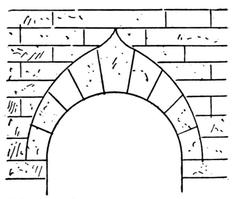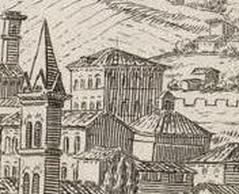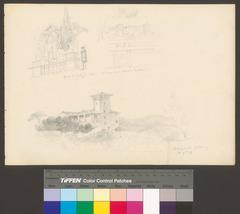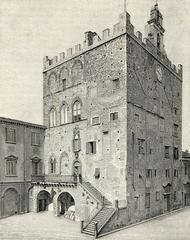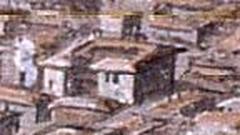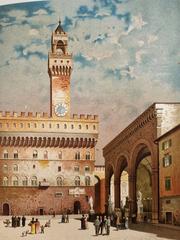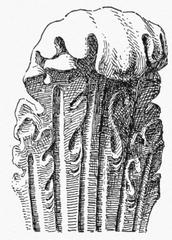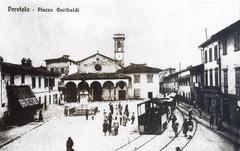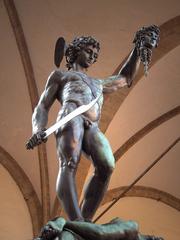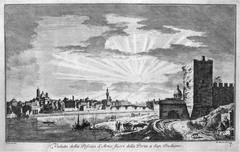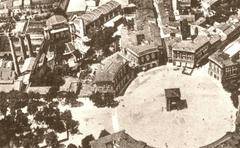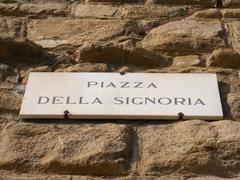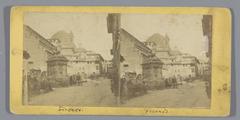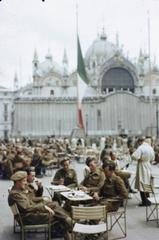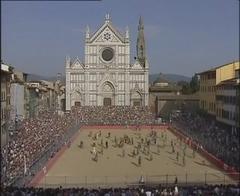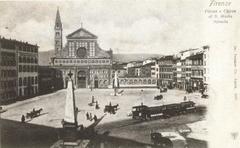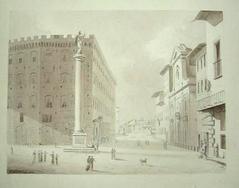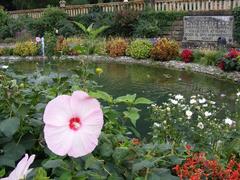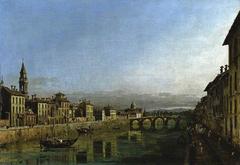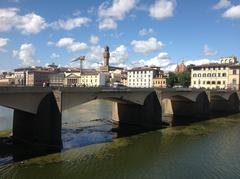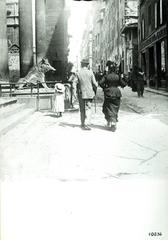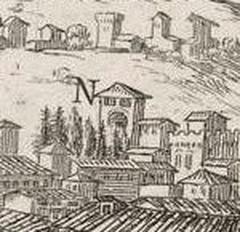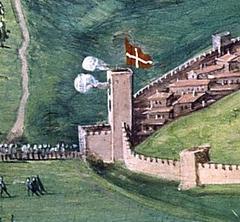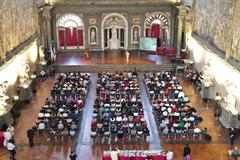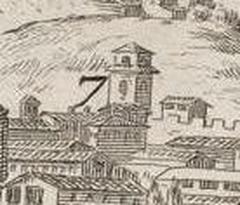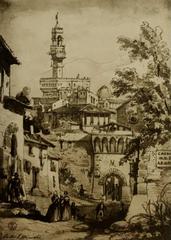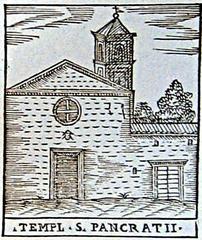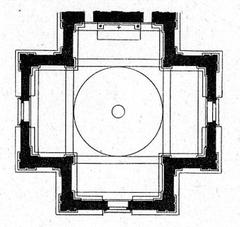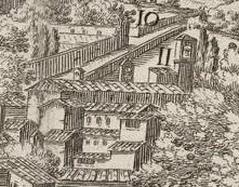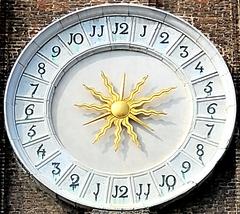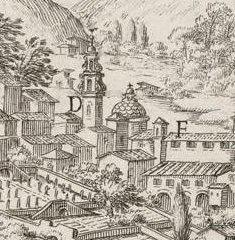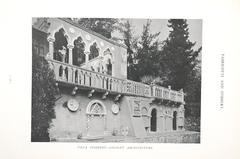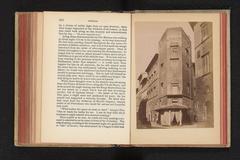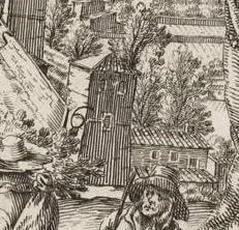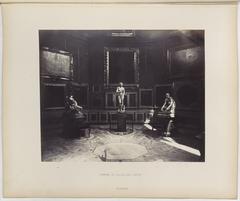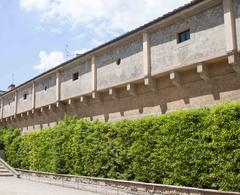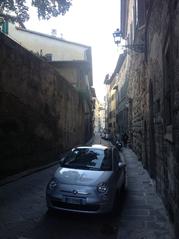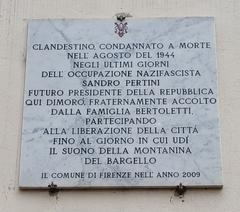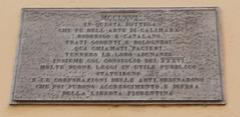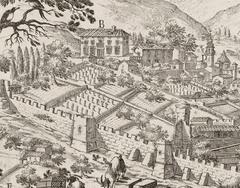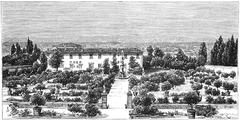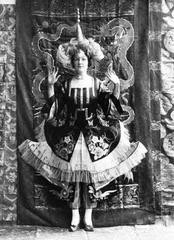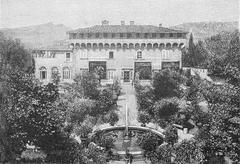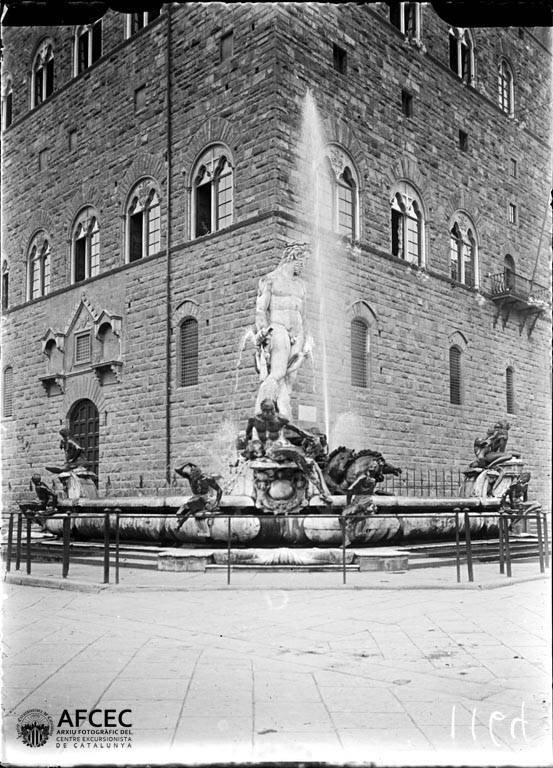
Comprehensive Guide to Visiting Fontana del Nettuno, Florence, Italy
Date: 23/07/2024
Introduction
The Fontana del Nettuno, also known as the Neptune Fountain, is an iconic landmark situated in the heart of Florence, Italy, specifically in the bustling Piazza della Signoria. Commissioned in 1565 by Cosimo I de’ Medici to celebrate the marriage of Francesco de’ Medici I and Johanna of Austria, the fountain stands as a testament to Florence’s rich artistic and cultural heritage. Designed by the renowned sculptor Bartolomeo Ammannati, with contributions from artists like Giambologna, the fountain is a stunning representation of Renaissance art and Mannerist style (Florence Inferno, Visit Florence).
The central figure of Neptune, the Roman god of the sea, is depicted in a commanding pose atop a chariot pulled by sea horses, symbolizing the Medici family’s dominion over both land and sea. Surrounding Neptune are intricate sculptures of mythological figures, including tritons, nereids, and satyrs, crafted by Ammannati’s assistants and other notable artists of the period. This monumental fountain not only showcases the technical and artistic prowess of its creators but also serves as a symbol of the Medici family’s power and Florence’s aspirations as a maritime power (The Florentine, Art Tribune).
Table of Contents
- Origins and Commissioning
- Design and Construction
- Artistic and Cultural Significance
- Visitor Information
- Nearby Attractions
- Restoration and Preservation
- Modern-Day Relevance
- Controversies and Challenges
- FAQ
Origins and Commissioning
The Fontana del Nettuno was commissioned in 1565 by Cosimo I de’ Medici to celebrate the marriage of Francesco de’ Medici I to Johanna of Austria. The project was part of a broader initiative to enhance the city’s public spaces and demonstrate the power and sophistication of the Medici family. Bartolomeo Ammannati, a prominent sculptor and architect of the time, was chosen for his expertise and artistic vision (Florence Inferno).
Design and Construction
The design of the Fontana del Nettuno was heavily influenced by the Renaissance ideals of symmetry, proportion, and classical mythology. The central figure of Neptune, the Roman god of the sea, was sculpted by Ammannati himself. Neptune stands atop a chariot pulled by four sea horses, symbolizing the power and majesty of the Medici rule over both land and sea. Surrounding Neptune are smaller statues and bas-reliefs depicting various mythological figures, including tritons, nereids, and satyrs, crafted by Ammannati’s assistants and other notable artists of the period (Visit Florence).
The construction required the diversion of water from the Arno River to supply the fountain’s elaborate waterworks. The project took nearly ten years to complete, with the final unveiling occurring in 1575. The fountain quickly became a symbol of Florence’s artistic and cultural renaissance, attracting visitors and admirers from across Europe.
Artistic and Cultural Significance
The Fontana del Nettuno holds a prominent place in the artistic and cultural history of Florence. It represents a fusion of classical mythology and Renaissance artistry, reflecting the Medici family’s patronage of the arts and their desire to align themselves with the grandeur of ancient Rome. The fountain’s intricate design and masterful execution showcase the technical and artistic prowess of Ammannati and his contemporaries.
Over the centuries, the Fontana del Nettuno has been the subject of various interpretations and critiques. Some art historians have praised its grandeur and complexity, while others have criticized certain aspects of its design, particularly the proportions of Neptune’s figure. Despite these differing opinions, the fountain remains an iconic landmark and a testament to the artistic achievements of the Renaissance (The Florentine).
Visitor Information
Visiting Hours
The Fontana del Nettuno is located in the open Piazza della Signoria and can be visited at any time of day. However, the best time to visit is during daylight hours to fully appreciate the details of the sculptures.
Tickets and Admission
There is no admission fee to view the Fontana del Nettuno as it is situated in a public square. However, guided tours that include the fountain and other historical sites in Florence may have associated costs.
How to Get There
The Piazza della Signoria is centrally located in Florence and is easily accessible by foot from most parts of the city. Public transportation options, such as buses, also service the area. For those driving, nearby parking garages provide convenient access.
Best Times to Visit
To avoid large crowds, it is advisable to visit early in the morning or later in the evening. The fountain is also beautifully illuminated at night, offering a different visual experience.
Accessibility
The Piazza della Signoria is wheelchair accessible, and the fountain can be viewed comfortably from various vantage points within the square.
Nearby Attractions
The Piazza della Signoria is home to several other notable attractions, including the Palazzo Vecchio, the Uffizi Gallery, and the Loggia dei Lanzi. Visitors can easily spend an entire day exploring the rich history and art in this central area of Florence.
Restoration and Preservation
The Fontana del Nettuno has undergone several restoration efforts to preserve its structural integrity and artistic beauty. The first major restoration took place in the 19th century, addressing damage caused by weathering and pollution. More recently, a comprehensive restoration project was completed in 2019, funded by the Salvatore Ferragamo fashion house. This project involved cleaning the marble surfaces, repairing structural damage, and installing a new water circulation system to ensure the fountain’s longevity (Art Tribune).
Modern-Day Relevance
Today, the Fontana del Nettuno continues to be a focal point of Florence’s cultural and social life. It serves as a popular gathering spot for both locals and tourists, offering a picturesque backdrop for photographs and a serene setting for relaxation. The fountain’s enduring appeal lies in its ability to connect the past with the present, reminding visitors of Florence’s rich artistic heritage and the enduring legacy of the Medici family.
In addition to its aesthetic and historical significance, the Fontana del Nettuno also plays a role in contemporary cultural events and celebrations. The fountain is often illuminated during festivals and special occasions, adding to the vibrant atmosphere of the Piazza della Signoria. Its presence in the heart of Florence serves as a constant reminder of the city’s enduring commitment to the arts and its role as a center of cultural innovation (Florence Web Guide).
Controversies and Challenges
Despite its grandeur, the Fontana del Nettuno has not been without controversy. Over the years, the fountain has been the target of vandalism and neglect. In 2005, the statue of Neptune was damaged by vandals, prompting a renewed focus on the security and preservation of the fountain. These incidents have highlighted the challenges of maintaining such a significant historical monument in a modern urban environment.
Efforts to protect the fountain have included increased surveillance, public awareness campaigns, and the installation of protective barriers. These measures aim to balance the need for public access with the imperative of preserving the fountain for future generations. The ongoing dialogue between preservationists, city officials, and the public underscores the importance of safeguarding Florence’s cultural heritage while ensuring that it remains accessible and relevant to contemporary audiences (The Guardian).
FAQ
What are the Fontana del Nettuno visiting hours?
The fountain is located in a public square and can be visited at any time, though daylight hours are best for viewing details.
Are there any tickets required to visit the Fontana del Nettuno?
No, there is no admission fee to visit the fountain.
How do I get to Piazza della Signoria?
The square is centrally located in Florence and accessible by foot, public transport, or car with nearby parking options.
Is the Fontana del Nettuno accessible?
Yes, the square is wheelchair accessible.
Conclusion
The Fontana del Nettuno stands as a testament to the artistic and cultural achievements of the Renaissance and the enduring legacy of the Medici family. Its intricate design, historical significance, and ongoing relevance make it a must-see attraction for visitors to Florence. Through continued efforts to preserve and protect this iconic monument, the Fontana del Nettuno will remain a symbol of Florence’s rich artistic heritage and its commitment to cultural excellence.
Call to Action
Planning a visit to Florence? Don’t miss the historic Fontana del Nettuno in the heart of the city. For more travel tips and insights on Florence’s historical sites, check out our other articles or follow us on social media for the latest updates.
References
- Florence Inferno (n.d.). Fontana del Nettuno. Retrieved from Florence Inferno
- Visit Florence (n.d.). Neptune Fountain. Retrieved from Visit Florence
- The Florentine (2020). Neptune Fountain Florence. Retrieved from The Florentine
- Art Tribune (2019). Fontana del Nettuno Firenze Restauro. Retrieved from Art Tribune
- The Guardian (2005). Italy Arts News. Retrieved from The Guardian
- Florence Web Guide (n.d.). Neptune Fountain. Retrieved from Florence Web Guide
